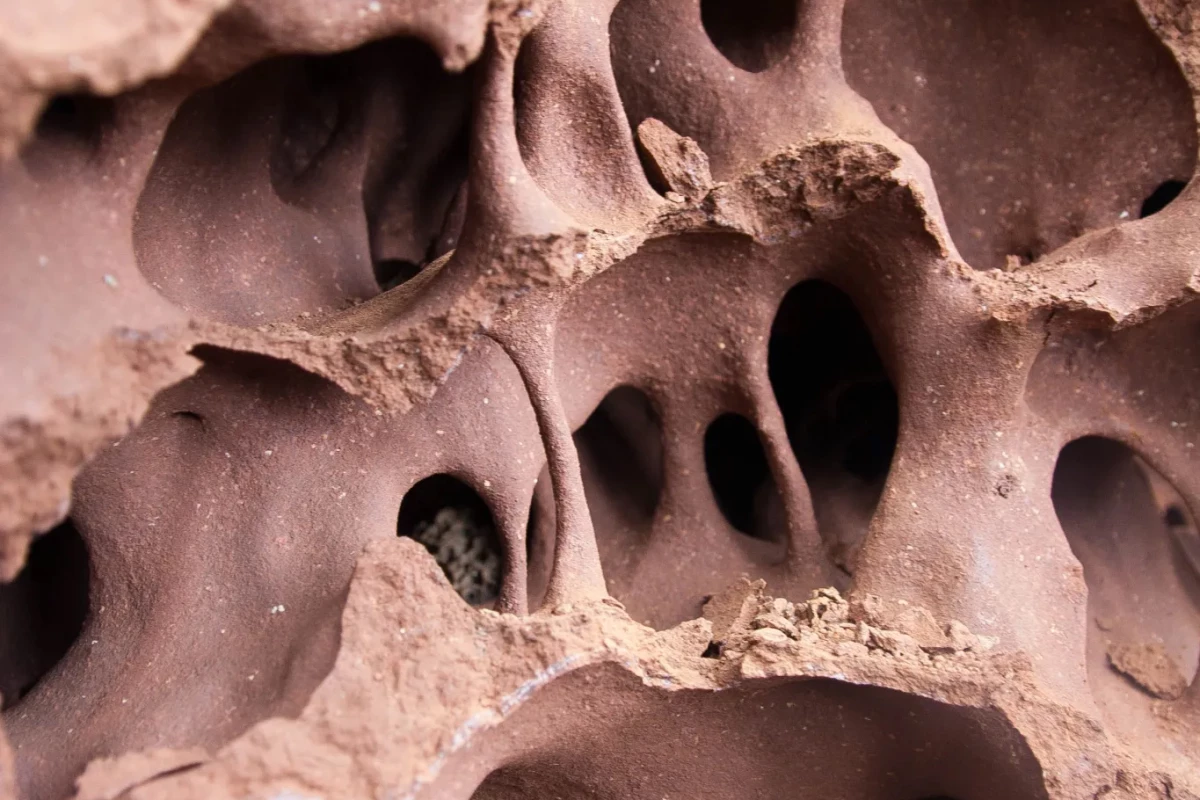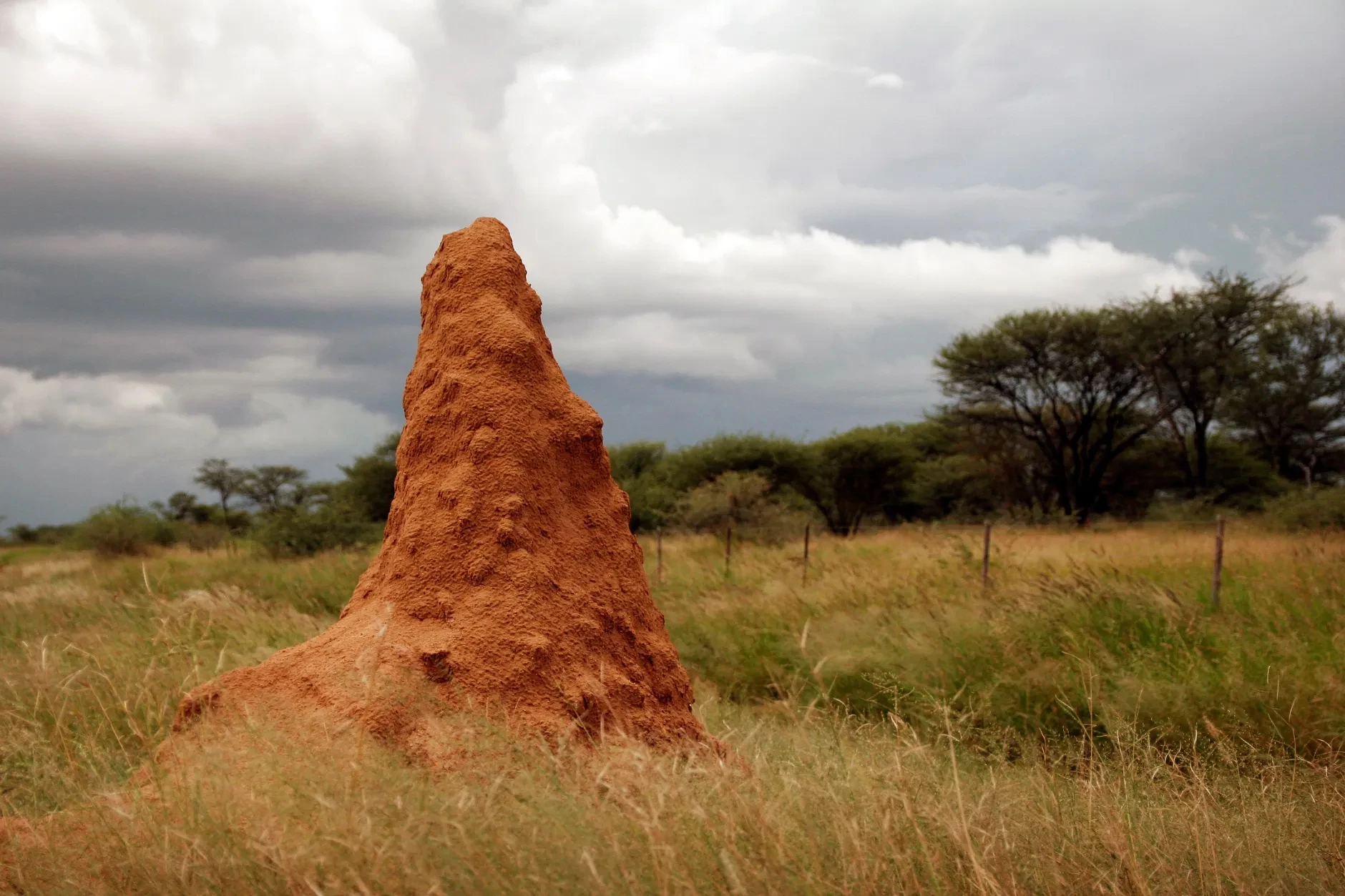Looking to nature can often provide inspiration, especially in construction. Researchers have studied how wind travels through the complex internal structure of a termite mound in hopes that it will one day inform the construction of a building that can semi-passively regulate its own climate.
Species of mound-building termites are found in Africa, Australia, and South America. Some mounds are astounding examples of intricate architecture, reaching 26 ft (8 m) high and having 98 ft (30 m) diameters. Their hardy construction means they often outlive the termite colonies that inhabit them.
Now, researchers have taken a closer look inside mounds built by Namibian Macrotermes michaelseni termites, which house more than a million individual termites. They were particularly interested in the ‘egress complex’, the dense, lattice-like network of tunnels that captures wind around the mound to create turbulence inside that controls the interior climate.
When building their mounds, M. michaelseni must consider internal and external factors that allow energy, matter and information to flow in both directions. The egress complex on the north-facing aspect of the mound appears predominantly during the rainy season when the mound is growing. At that time, it’s the only opening between the mound and the external environment. It’s thought that the complex facilitates the evaporation of excess moisture while maintaining adequate ventilation. But the researchers wanted a better understanding of how it worked.

They experimented using a 3D-printed model fragment of an egress complex and drove an oscillating mixture of carbon dioxide and air through it. Using sensors to track the air the researchers found that the egress tunnels interacted with wind blowing on the mound in ways that enhanced ventilation. Airflow was greatest at oscillation frequencies between 30 Hz and 40 Hz, moderate between 10 Hz and 20 Hz, and least at frequencies between 50 Hz and 120 Hz.
They concluded that the turbulence created by the egress complex enabled wind-powered ventilation of termite mounds.
“When ventilating a building, you want to preserve the delicate balance of temperature and humidity created inside, without impeding the movement of stale air outwards and fresh air inwards,” said Rupert Soar, co-author of the study. “Most HVAC [heating, ventilation, and air conditioning] systems struggle with this. Here we have a structured interface that allows the exchange of respiratory gases, simply driven by differences in concentration between one side and the other. Conditions inside are thus maintained.”
The researchers foresee that replicating the termite’s tunnel structures in human buildings may be a way of semi-passively regulating their climates.
“We imagine that building walls in the future, made with emerging technologies like powder bed printers, will contain networks similar to the egress complex,” said David Andréen, the study’s lead author. “These will make it possible to move air around, through embedded sensors and actuators that require only tiny amounts of energy.”
The researchers are aware that it may take some time before the complex structure of these insect-made homes can be incorporated into a building but they remain optimistic.
“Construction-scale 3D printing will only be possible when we can design structures as complex as in nature,” Soar said. “We are on the brink of the transition towards nature-like construction: for the first time, it may be possible to design a true living, breathing building.”
The study was published in the journal Frontiers in Materials.
Source: Frontiers Science News







